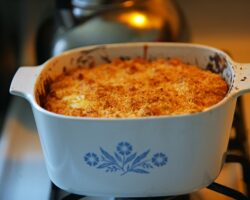Wine and cheese are made for each other. However, the relationship in this seemingly ideal union is not going so smoothly. To achieve a balanced combination of flavours and enjoy every facet of it, it is important to be able to pair perfectly. Choosing the right cheese for wine is a whole art, which can be comprehended endlessly. Here are some key principles that will help you come up with the perfect pairings for all occasions.
Let’s start with the most important rule to remember. The richer the wine, the brighter the cheese should taste. And vice versa. The same can be said about the scent. The intense bouquet of wine is best emphasized by cheese with a pronounced aroma. Similarly, you can answer the question of which cheeses are better for red wines with long aging. The older the wine, the more mature the cheese should be.
If the wine has matured in an oak barrel for a long time, it is recommended to completely abandon the cheese snack. The fact is that woody accents are extremely poorly combined with any creamy taste. At the same time, the creamy texture of the cheeses softens the tannins well. Therefore, soft cheeses are appropriate for drinks with a moderate tannin content. The French and Italians do the easiest thing – they pair the wine with cheese produced in the same region. This rule works flawlessly.
Aged red wines and hard cheeses
Remember, white wines pair better with cheese than reds. Therefore, the second to choose a harmonious pair is somewhat more difficult. The most difficult case is the aged red wines, which require a finely selected addition. The ideal appetizer for this wine is Italian pecorino, Gran Served or Parmesan. This list can include hard noble cheeses Gouda, Manchego, Basque cheese made from sheep’s milk, cheddar – smoked or from goat’s milk. Cheese with a grainy texture, such as barolo, can help smooth out the bitterness of tannins and reduce acidity.
Light red wines and semi-hard cheeses
Light red wines like Beaujolais or Pinot Noir are much easier. Here the selection of suitable cheeses opens up wide. Gruyere, an exquisite semi-hard cheese with expressive nutty notes, is ideal for such wines. An Italian taleggio with a pleasant rich aroma will also make light wines a harmonious company. You can make a whole cheese platter with Camembert, Cacocavallo, Fontina or Brie. With what wine to serve cheese platter, it’s up to you. The main thing is that they should be moderately tart red varieties such as Merlot, Pinot Noir or Sangiovese.
Rosé wines and soft cheeses
An intense and at the same time delicate bouquet of rosé wines is revealed more fully in combination with soft cheeses such as mozzarella, ricotta or feta. By the way, the same cheeses can be safely served with any white varieties, as well as with dry red Pinot Noir. An excellent addition to rosé wines will be noble cheeses made from goat’s or sheep’s milk: Saint-Mor, Chevre, Crotin de Chavinbol, Chabichou du Poiato. And if you have a high-strength rosé wine available, Maasdam cheese with big eyes and a tart, nutty sweet taste is a suitable snack.
Aromatic white wines and blue cheeses
As you know, white wines, unlike red ones, do not contain tannins, which greatly facilitates the choice of cheeses. Perhaps the only exception here are cheeses with noble mold. The famous Roquefort or Gorgonzola is, in principle, self-sufficient and can do without a gastronomic addition, since their intense taste and specific aroma can completely overwhelm the taste of almost any white wine. Apart from varieties with a rich bouquet, such as Muscat, Gewurztraminer, Torrontes. A good pair of “fragrant” cheeses are sweet wines of late harvest – “Sauternes” and “Tokay”.
Aged white wines and mature cheeses
Aged white wines are in perfect harmony with mature cheeses. For example, “Chardonnay” with a complex fruity-floral bouquet contains notes of vanilla and milk iris. One of the most successful additions for it is Epuas cheese with a pungent odor, which begins to exude a crust during the ripening process. If you don’t like overly powerful flavors, choose Brie or Delis de Bourgogne. Gruyere, Beaufort and Conte work well with aged white wines. The slightly oily texture of white wines in this case softens the dry texture of the cheese and mutes the spicy taste.
Sparkling wines and cheese variety
For sparkling wines, the following rule applies – the sweeter the drink, the more piquant the cheese. The rest is dictated by the variety. A universal option for any sparkling wine is Camembert. Brie and goat cheese are more suitable for light dry wines. Young cheddar with a rich taste and bright aroma successfully emphasizes the bouquet of aged wines. Gouda with exquisite nutty notes can be served with German sparkling wines. A light sweet champagne like Asti is in harmony with moldy cheeses, especially gorgonzola. You can make a whole cheese plate. But at the same time, no more than three varieties of cheese should lie on it.
Of course, these are just some of the generally accepted principles for pairing wine and cheese. There are a great many of all kinds of nuances. Do not forget that much depends on individual taste preferences. We’ve collected basic guidelines and secrets. They will allow you to compose harmonious duets and discover familiar drinks and snacks from a new side. Create your own wine and cheese duos and surprise your family with small gastronomic pleasures.






